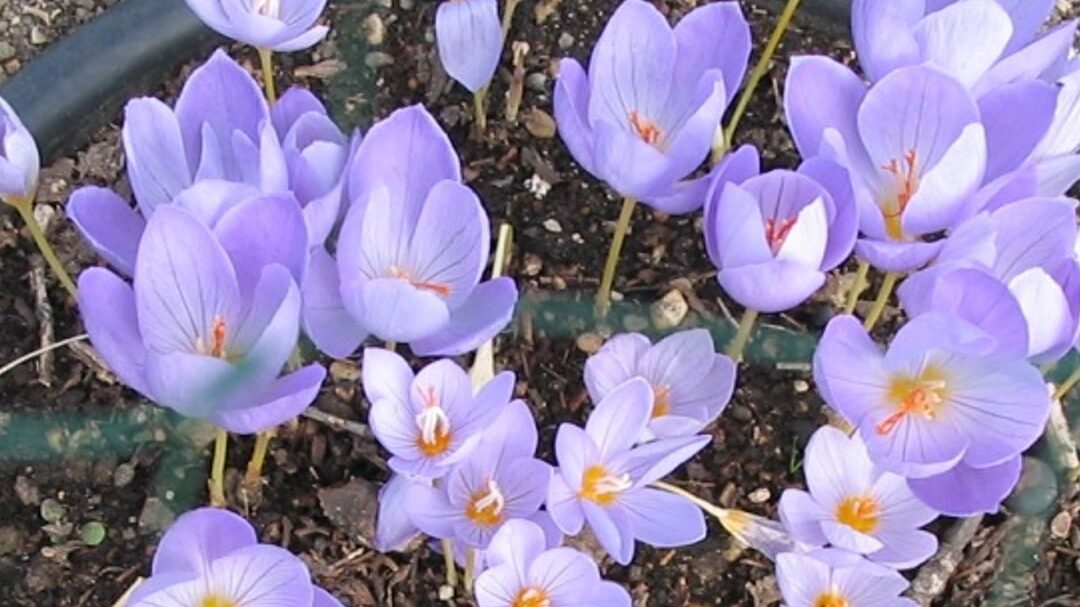
Introduction
Saffron, often called “red gold”, is one of the most expensive spices in the world. The stigmas of the flower are usually used in cooking as a seasoning or as a coloring agent due to its intense yellow color produced by carotenoid-type pigments called crocins. Saffron is also characterized by a bitter taste (due to the presence of picrocrocin) as well as a characteristic odor associated with safranal, a volatile monoterpene. A flower of Crocus sativus L. gives 3 stigmas which weigh about 2 mg each. To obtain one kilogram of saffron, it takes approximately 250,000 flowers. As this harvest can only be done by hand, this easily explains the price of this spice, which can reach 30,000 €/kg. This is why lots of frauds exists around saffron, in some cases, those fruads can turn out to be very ingenious. Powdered saffron can be adulterated with turmeric, paprika or by dyers’ saffron, safflower. But some frauds go further. It is possible to find shredded meat then recolored with suitable pigments (such as turmeric) to which is added a small amount of synthetic safranal to bring the characteristic smell necessary for deception. Other plants can be used to deceive actors, so controls must be effective enough to detect them. But beyond authentication controls, it is important to focus on the quality of the standardization of saffron samples. To evaluate a quality, one or more tracers are generally used. In the case of saffron, we now find many dry extracts on the market standardized at 2% safranal. Does this marker really make it possible to estimate the quality of a saffron sample?

Study
Issue
For many years, the ISO 3632 method has served as a benchmark for assessing the quality of saffron products. It also proposes an international classification of saffron qualities making it possible to establish saffron categories to discriminate between the different samples. There are 3 classes from category 3, the lowest quality, to category 1 which is considered to be the best. This assay is carried out by UV spectrophotometry by respectively assaying picrocrocin at 257nm, crocins (or crocetins) at 440nm and safranal at 330nm on the UV spectrum of the saffron sample to be analyzed (figure 2).


In reality, this UV spectrum of a sample of saffron corresponds to the superposition of all the UV spectra of all the chemical constituents. As picrocrocin, crocins and safranal are the predominant compounds, the UV spectrum corresponds to the superposition of the UV spectra of these 3 substances (FIG. 3). This method makes it possible to compare samples with each other using the values obtained for the 3 characteristics. But these values obtained are not a real percentage, it´s just a value to compare samples one to another.
However, the safranal contents of the dry extracts on the market are indeed expressed as a percentage according to the ISO3632 standard. This is due to an inappropriate use of this method to obtain these percentages. The ISO3632 method is an empirical method that is not based on analytical standards. No calibration curves has been done, which means that no percentage can really be given. In addition, the 330nm bump on the UV spectrum in figure 2 is mentioned as being associated with the amount of safranal but in reality, this bump is present in all the UV spectra of part of the crocins: the cis derivatives. As there are always cis-crocin derivatives, this means that even if there is no trace of safranal in the sample, a positive content can still be given for safranal.

Analysis of a customer sample
To dose a compound in a relevant way it is necessary to separate the molecule beforehand to dose it selectively. HPLC chromatography is specially adapted for this. Thus, the HPLC will make it possible to precisely dose the safranal. A sample of quality saffron will contain approximately 0.1-0.2% saffron. It is therefore impossible to naturally find 2% safranal.
It is important to know that many dry extracts on the market standardized at 2% safranal do not contain any traces of safranal.

CONCLUSION
Achieving proper control is important for your herbal products. If we really want to measure the quality of a sample, the method used must be sufficiently relevant.
How to ensure the quality of your Saffron samples?
By carrying out a dosage of active ingredients by HPLC and avoiding ISO3632 which is not relevant to standardized but only to compare samples one to another.


Recent Comments